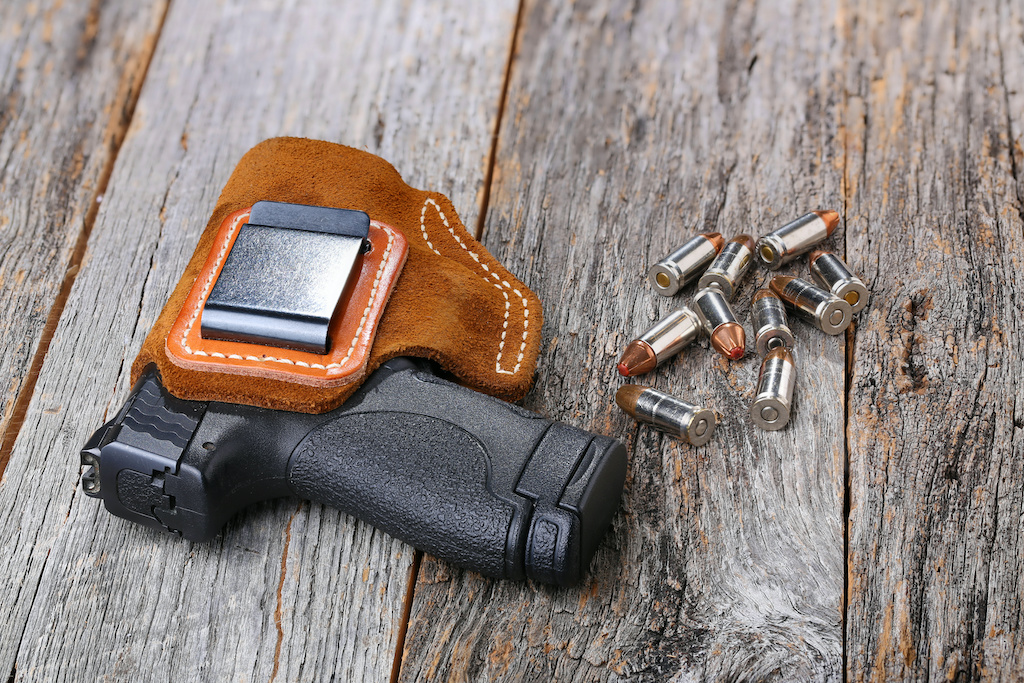Did you know that some soldiers carry sidearms? Apart from being a tradition in the U.S. military, having another gun as a backup can save a soldier’s life in a firefight. Imagine your rifle or machine gun jamming at the worst possible time, when enemies come charging at your position. A handgun can make a big difference.
The great outdoors is no warzone; hunting big game doesn’t warrant using a service rifle. Having a sidearm in a place where danger lurks behind the trees can save your life. Bear attacks, although rare, are a thing, especially if you bring your dog along on your camping trip. A few warning shots, at best, will discourage the bear and leave you alone.
For the record, if you won’t be camping in bear country, it’s better not to bring a sidearm. It’s not the norm among campers and hikers. But if you will be, using a sidearm will require gun discipline. Getting shot at any part of your body by accident isn’t exactly a pleasant experience. Take note of these tips on safely using your handgun when needed.
Concealed Carry
Sometimes, a good gun is one that you never have to use, let alone draw out in broad daylight. The only safe place for a handgun is inside a holster like the best iwb kydex holster. It serves two chief purposes: preventing an accidental discharge and avoiding scaring everyone around you.
A handgun firing out of nowhere can be dangerous. You or someone can get shot, and the liability will all be on the owner, even if it’s unintentional. A properly-made holster contains safety features that prevent an accidental discharge, such as trigger guards. It also needs to allow the gun a proper fit, as the trigger getting caught in the edges is a recipe for disaster.
Also, concealed carry is an immutable law in every county and state. The sight of a handgun in the open is enough to put people on edge, even when you don’t intend to use it. Several states such as California, Florida, and Illinois prohibit open carry for any firearm, while others forbid open carry for specific ones.
Keeping It Clean
If you’ve used your handgun for quite some time, you can expect a buildup of carbon and metallic particles inside the mechanism. These deposits can reduce the gun’s accuracy. Worse, they can even jam the entire thing and render it useless. In some cases, dirty guns tend to cause accidental discharges.
Generally, it’s a good idea to learn how to field-strip a gun. Field stripping allows you to clean the entire firearm down to its nuts and bolts, making sure it works the next time you use it. Cloth rags are usually enough to remove the buildup from the parts.
An alternative to field stripping (albeit temporarily) is cleaning the barrel. You can use a boresnake or bore brush to remove the buildup inside the barrel. These tools have softer metals as brushes to prevent scraping the barrel surface and add to the problem.
Treating It as Live
Treat your gun as though it’s ready to fire at any time, whether or not the safety’s engaged. There’s no room for complacency in owning a deadly weapon, as complacency is how you get injuries and accidental deaths. And as mentioned before, it’ll all be on you.
The National Shooting Sports Foundation offers several tips on how to do this.
- Unload the gun when not in use, including that one round in the chamber
- Keep the muzzle pointed in a safe direction, away from people or pets
- When about to shoot, make sure that nobody is behind the target
- Never attempt to fire a dud; slowly open the action and dispose of the dud
- Keep your finger away from the trigger unless you’ve decided to shoot
It’s Not a Game

Most importantly, remember that firing a gun in real life isn’t the same as doing the same in a first-person shooter. The people around you aren’t randomly-generated NPCs but ones with friends and families. You won’t magically heal back when you shoot yourself in any part of the body; the pain is real and can end you. And you’re not fighting in a war.
As a gun owner, you should be more responsible about its use, whether in a crowded area or away from civilization. Only use your gun when you and your companions are at risk of death.
Conclusion
Most of the time, a camping trip won’t warrant carrying a sidearm. But when going to a place with a record of wild animal attacks, it’s helpful not to get caught lacking. In responsible hands, a gun can deter danger when it rears its head. When it does, you’ll be happy in the fact that you get to go camping another day.
